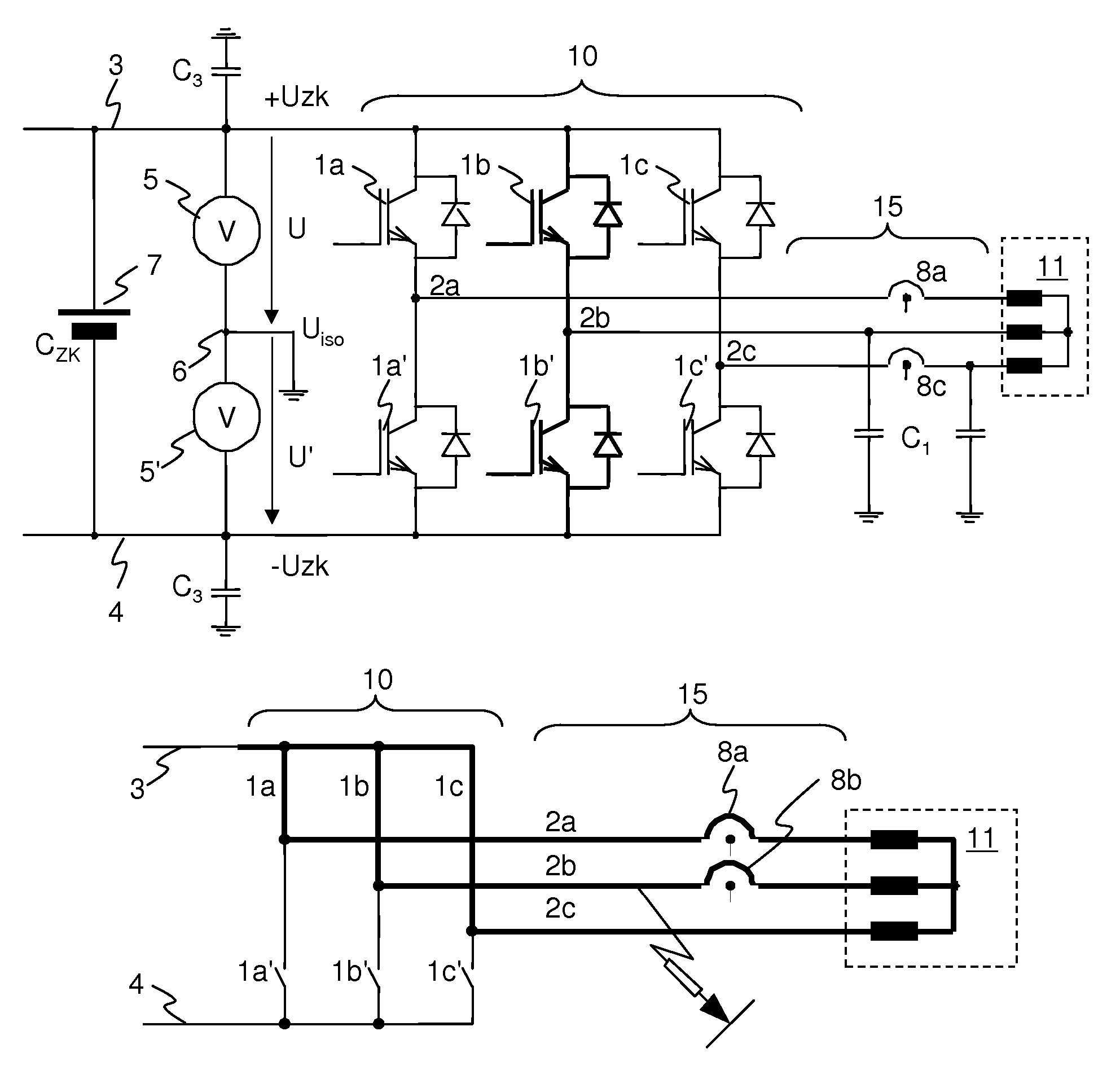Circuit arrangement and method for insulation monitoring for inverter applications
a technology for inverter circuits and circuits, applied in short-circuit testing, power supply testing, instruments, etc., can solve problems such as loss of insulation, difficulty in setting warning limits and fault limits, and misleading error messages regarding insulation condition
- Summary
- Abstract
- Description
- Claims
- Application Information
AI Technical Summary
Benefits of technology
Problems solved by technology
Method used
Image
Examples
Embodiment Construction
[0073]FIG. 1 shows an inverter arrangement. An intermediate circuit 7 with an intermediate circuit (or CD link) capacitance CZK is fed by a source (not shown), for example an active or passive rectifier (directly or via a direct current network) or a battery, which may be connected directly or via a DC voltage controller. A rectifier is typically fed by a transformer or a generator. A neutral point 6 of the intermediate circuit 7 is electrically connected to earth, a vehicle chassis and / or to housing parts of the apparatus in the IT network. The intermediate circuit 7 comprises a positive branch 3 whose voltage +UZK with respect to the neutral point 6 may be measured by a first branch voltage measurement 5, and a negative branch 4 whose voltage −UZK may be measured by a second branch voltage measurement 5′. An inverter 10 is formed in the known manner by way of electronic power switches, which collectively are indicated with the reference numeral 1. A first group of these switches 1...
PUM
 Login to View More
Login to View More Abstract
Description
Claims
Application Information
 Login to View More
Login to View More - R&D
- Intellectual Property
- Life Sciences
- Materials
- Tech Scout
- Unparalleled Data Quality
- Higher Quality Content
- 60% Fewer Hallucinations
Browse by: Latest US Patents, China's latest patents, Technical Efficacy Thesaurus, Application Domain, Technology Topic, Popular Technical Reports.
© 2025 PatSnap. All rights reserved.Legal|Privacy policy|Modern Slavery Act Transparency Statement|Sitemap|About US| Contact US: help@patsnap.com



